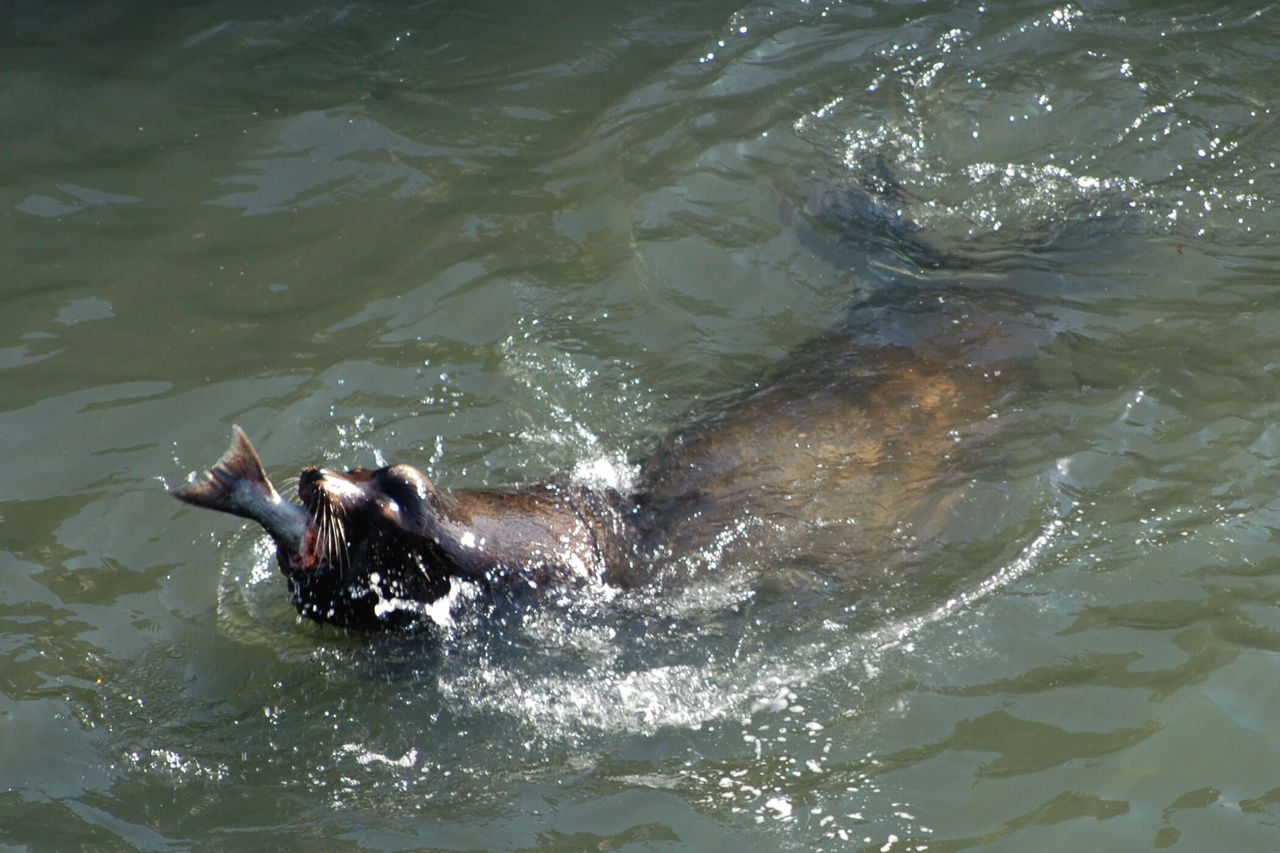Up to 716 sea lions may be removed from a Columbia River management zone over the next five years to reduce the animals’ impact on salmon and steelhead populations, under a new federal authorization granted to Northwest states and tribes.
In 2018 Congress amended the Marine Mammal Protection Act to allow removal of sea lions from a stretch of the Columbia River, between the I-205 bridge on Portland’s east side and McNary Dam. The change also allowed for removing sea lions from Columbia River tributaries below the McNary Dam that are spawning habitat for threatened or endangered salmon and steelhead runs.
The new authorization from the NMFS West Coast Regional office enables sea lion removal to be used where the animals are preying on those species, sturgeon, lamprey or eulachon.
“Unless a zoo or aquarium is interested in taking the sea lions that are removed, they are humanely euthanized,” according to NMFS officials.
The cull is another turnaround for Pacific sea lions, almost eliminated during an era of bounties and market hunting. Since the Marine Mammal Protection Act was passed in 1972 the California sea lion population has rebounded to more than 250,000 and the eastern stock of Stellar sea lions has grown to more than 70,000 animals over the past decade, according to NMFS.
With that population growth, their appetite for salmon and steelhead has been a mounting issue for two decades. Sea lions hunt adult salmon and steelhead as they migrate upriver from the ocean to Bonneville Dam, Willamette Falls, and other tributaries to the Columbia River. It’s at a crucial point in the salmon life cycle, after the adults have survived in the ocean, but just before they return to their home rivers to spawn.
Biologists estimate the sea lions eat more than 10,000 salmon and steelhead in some years.
“This is one element of a comprehensive strategy that also addresses impacts at dams, hatcheries, and through harvest,” said Chris Yates, NMFS’ West Coast assistant regional administrator for protected resources, in announcing the authorization. “Removing sea lions is not anyone’s first choice, but this provides the states and tribes flexibility to manage these impacts.”
As required under the Marine Mammal Protection Act, NMFS convened a task force earlier this year – including representatives from federal and state agencies, tribes, and conservation and fishing organizations – to review applications for the removal authorization and make recommendations.
The authorization was then granted to Oregon, Washington, and Idaho; the Nez Perce Tribe; Confederated Tribes of the Umatilla Indian Reservation; the Yakama Nation; and the Confederated Tribes of Warm Springs. The approval also includes tribes that help manage sea lion impacts on the Willamette River.
Specifically, the authorization allows for removing up to 540 California sea lions and 176 Steller sea lions over the next five years.







